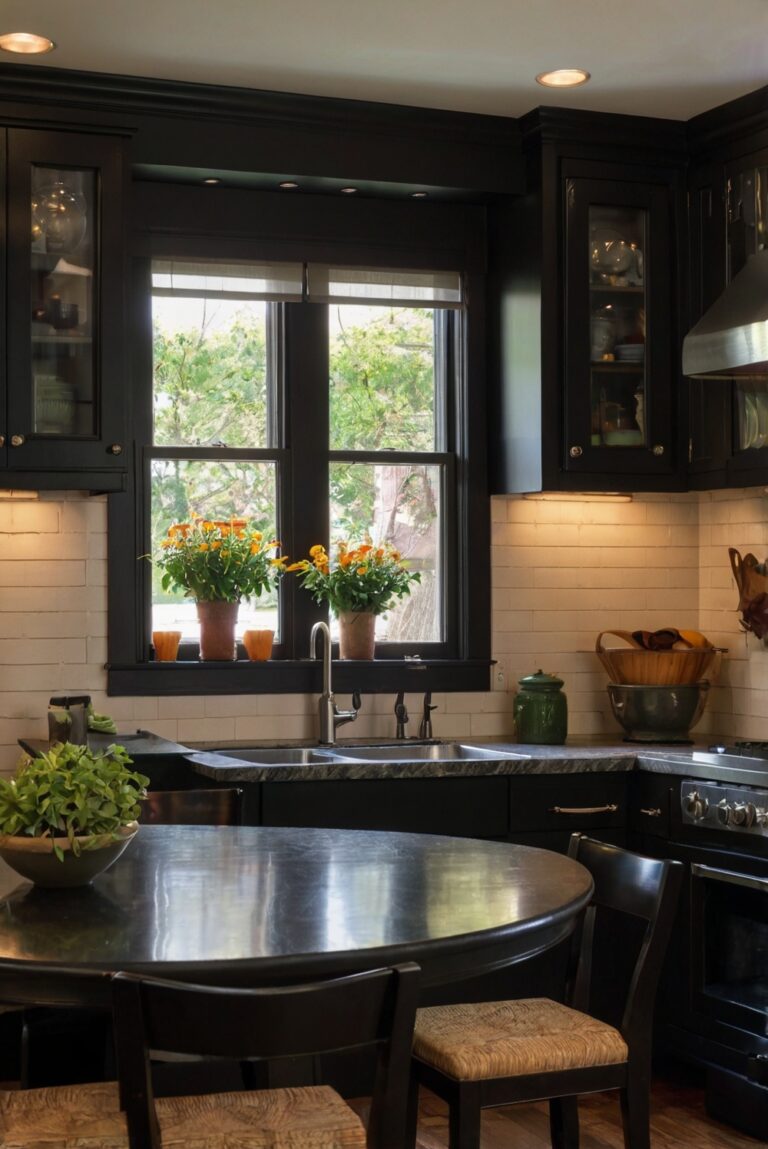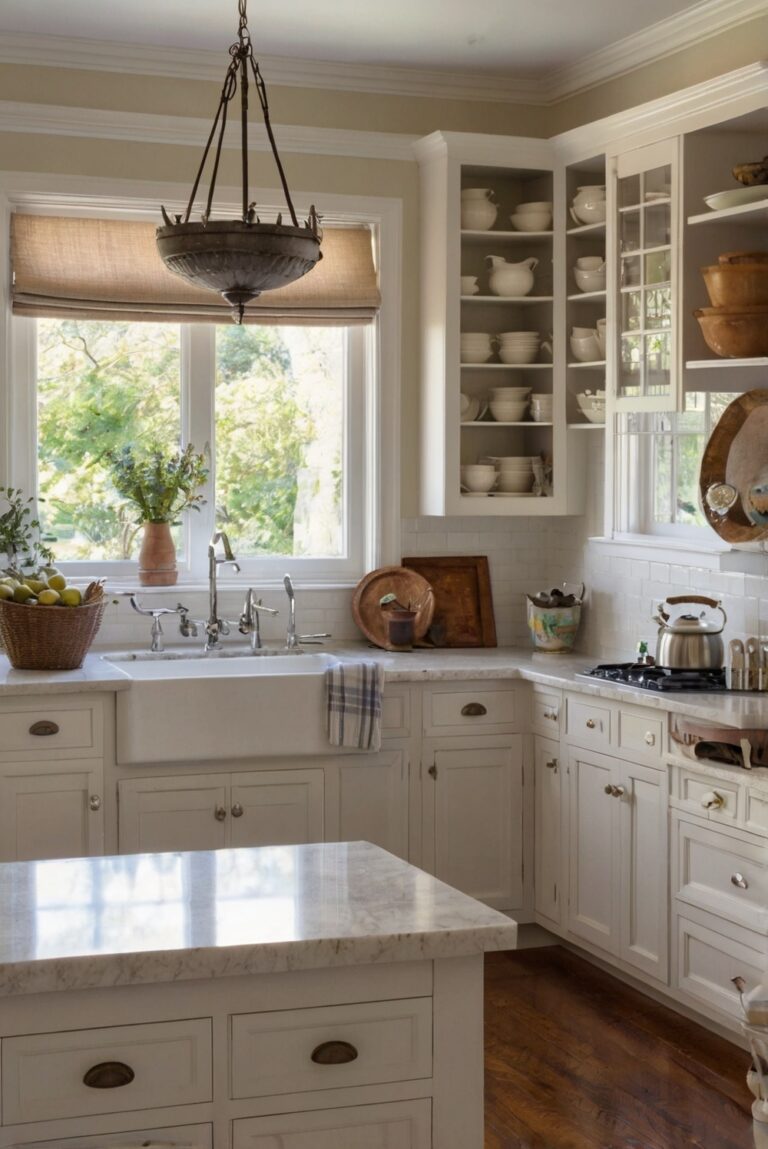Learn the step-by-step process of installing a farmhouse sink in your kitchen. Follow this daily routine guide to upgrade your space with rustic charm and functionality.
How to install a farmhouse sink in your kitchen?
**How to install a farmhouse sink in your kitchen?**
To install a farmhouse sink in your kitchen, start by measuring the sink area and ensuring there is enough space for installation. Next, remove the old sink and cut out the countertop to fit the farmhouse sink. Install additional support if needed and then place the farmhouse sink into position. Secure the sink with brackets and connect the plumbing. Seal the edges with silicone caulk for a clean finish. This process requires careful planning and precise measurements to ensure a successful installation. It is recommended to consult a professional if you are unsure about any steps to avoid potential risks. Proper installation of a farmhouse sink can enhance the overall look of your kitchen and add a touch of elegance to your home decor.
What is a farmhouse sink?
A farmhouse sink, also known as an apron-front sink, is a large, deep sink that has a visible front panel that extends past the edge of the countertop. It is a popular choice for kitchens due to its rustic and charming aesthetic. Farmhouse sinks are typically made of materials like fireclay, porcelain, stainless steel, or copper. They offer plenty of space for washing large pots and pans and are often chosen for their practicality and style.
Why install a farmhouse sink in your kitchen?
Installing a farmhouse sink in your kitchen can bring a touch of elegance and functionality to your space. The deep basin of a farmhouse sink allows for easy cleaning of large pots and pans, making it ideal for those who love to cook and entertain. The apron-front design adds a stylish focal point to your kitchen and can complement a variety of design styles, from traditional to modern. Additionally, farmhouse sinks are durable and long-lasting, making them a worthwhile investment for your home.
What are the steps to install a farmhouse sink in your kitchen?
Installing a farmhouse sink in your kitchen may seem daunting, but with the right tools and preparation, it can be a manageable DIY project. Here are the general steps to follow:
1. **Measure and prepare:** Measure the cabinet where the sink will be installed to ensure it can accommodate the size of the farmhouse sink. Make any necessary modifications to the cabinet and countertop to create a proper opening for the sink.
2. **Install support brackets:** Depending on the weight of the sink, you may need to install support brackets or braces to hold the sink in place. Follow the manufacturer’s instructions for proper installation.
3. **Connect plumbing:** Install the necessary plumbing fixtures, including the drain and water lines, to connect the farmhouse sink to the existing plumbing in your kitchen. Make sure to seal all connections properly to prevent leaks.
4. **Place the sink:** Carefully lower the farmhouse sink into the prepared opening in the countertop. Ensure that the sink is level and secure before proceeding.
5. **Finish installation:** Once the sink is in place, secure it to the countertop using the provided hardware. Make any final adjustments as needed to ensure the sink is properly installed and functional.
How to care for a farmhouse sink?
Once your farmhouse sink is installed, it’s important to care for it properly to maintain its beauty and functionality. Here are some tips for caring for your farmhouse sink:
– **Regular cleaning:** Clean your sink regularly with mild soap and water to prevent buildup of dirt and grime. Avoid harsh chemicals or abrasive scrubbers that can damage the sink’s finish.
– **Avoid staining:** Be cautious with foods and liquids that can stain the sink, such as coffee, tea, or red wine. Wipe up spills promptly to prevent staining.
– **Prevent scratching:** Use a sink grid or protective mat to prevent scratching the sink’s surface with pots, pans, or utensils. Avoid dropping heavy objects into the sink that can cause damage.
– **Maintain the finish:** Depending on the material of your farmhouse sink, you may need to periodically apply a protective sealant or polish to maintain its finish and prevent corrosion.
Where to buy a farmhouse sink?
Farmhouse sinks are available at home improvement stores, kitchen and bath showrooms, and online retailers. When purchasing a farmhouse sink, consider the size, material, and style that best suit your kitchen and design preferences. Look for reputable brands and retailers that offer quality products and customer support.
1. What tools do I need to install a farmhouse sink in my kitchen?
To install a farmhouse sink, you will need a variety of tools including a wrench, screwdriver, silicone sealant, measuring tape, adjustable pliers, and a jigsaw or reciprocating saw. These tools are essential for removing the existing sink, cutting the countertop if necessary, and securing the farmhouse sink in place. Additionally, you may need caulk, mounting brackets, and support beams to ensure the sink is properly installed and supported.
2. How do I measure for a farmhouse sink installation?
Before purchasing a farmhouse sink, measure the cabinet space where the sink will be installed. Measure the width, depth, and height of the cabinet to ensure the sink will fit properly. Additionally, measure the countertop to determine if any modifications need to be made to accommodate the farmhouse sink.
3. What are the steps to installing a farmhouse sink in my kitchen?
The installation process for a farmhouse sink involves removing the existing sink, cutting the countertop if necessary, placing the farmhouse sink in the cabinet, securing it with mounting brackets, and applying silicone sealant around the edges. It is important to follow the manufacturer’s instructions and use the correct tools to ensure the installation is done correctly.
4. Do I need professional help to install a farmhouse sink?
While installing a farmhouse sink can be a DIY project, some homeowners may prefer to hire a professional to ensure the sink is installed correctly. If you are not comfortable with cutting countertops or working with plumbing, it may be best to hire a professional to avoid any potential issues.
5. Are there any tips for maintaining a farmhouse sink?
To keep your farmhouse sink looking its best, regularly clean it with a mild detergent and water. Avoid using harsh chemicals or abrasive cleaners that can damage the sink’s finish. Additionally, consider using a sink grid to protect the bottom of the sink from scratches and dents. Regular maintenance will help keep your farmhouse sink looking beautiful for years to come.







